A gold rush that accelerated with the onset of the 2008 global recession compounds the woes of the Amazon basin, laying waste to Peruvian rain forests, spilling tons of toxic mercury into the air and water.
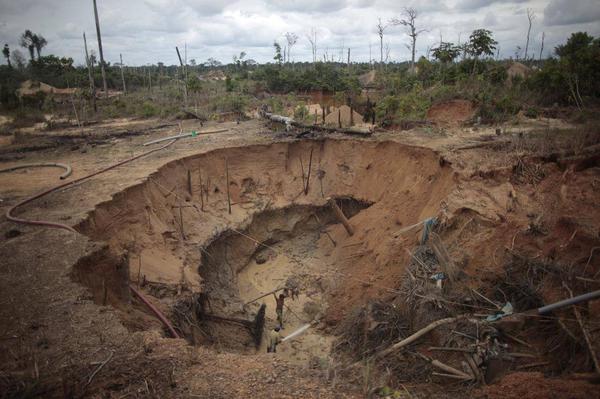

Amazon Gold: Deforestation, Mercury-Poisoned Rivers
Encouraged by the soaring price of gold, hundreds of thousands of poorer people in Peru have been trying to strike gold in the country’s makeshift mines, operating outside the law. In addition to massive environmental devastation, the illegal mines are associated with child labor, shady international drug ring connections, sex trafficking and horrific working conditions. Peru’s government is now trying to crack down on illegal prospecting by supporting “ethical gold mines” which aim to slow down environmental damage and give miners better working conditions.
Greg Asner, the Carnegie Department of Global Ecology scientist, led a research and analysis team aboard the plane called the Carnegie Airborne Observatory (CAO) and documented the destruction, seen in a video featured below. They found more than 50,000 hectares have been affected by gold mining in just the southern part of the department of Madre de Dios. In their published study, Asner and a team of US as well as Peruvian Ministry of the Environment researchers showed the rate of expansion has nearly tripled in recent years, climbing from 5,350 acres (2,166 hectares) per year before 2008 to 15,180 acres (6,145 hectares) each year after the 2008 global financial crisis that rocketed gold prices.
More than 20,000 unlicensed gold miners recently protested in Peru’s capital and various regions against President Ollanta Humala’s crackdown on illegal mining. The dissenters want the government to ease a regulation passed in 2012, which forces more than 70,000 miners to register their mining activities by this April 19 or otherwise face sanctions, which include imprisonment. The Peruvian government has vowed to uphold the requirement.
httpvh://youtu.be/c5cIvHeNXmk
Journalist Güido Lombardi from the CAO comments on the impacts of illegal gold mining in the zones Guacamayo and Huapetuhe, Madre de Dios, Peru, on RPP News (Spanish).
STORY: Destructive Progress: Brazil-Peru Transoceanic Highway
Peru’s Ecotourism Legacy Endangered
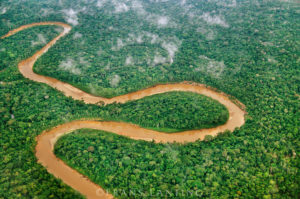

At stake are vast areas of wildlife-rich rainforests including that in the Tambopata National Reserve and Manu National Park, which is the largest national park in Peru and has been designated a World Heritage Site by the United Nations Educational, Scientific and Cultural Organization (UNESCO). Miners also hunt wild game, depleting the rainforest fauna around mining areas, and disrupting the ecological balance for centuries to come.
Furthermore, normally clear-flowing streams have been converted to sediment-laden cesspools. Streams draining mining areas run blood-red and carry toxins and heavy metals like mercury to downstream towns and villages, polluting the entire food chain. Virtually all this mining is illegal.
Miners combine mercury with sediments that contain gold — typically using their feet to mix them in a bucket or drum — to form a solid amalgam of the two metals. That amalgam is then heated, often in frying pans over open flames in non-ventilated spaces, to boil off the mercury and leave gold behind.
The global gold-mining industry, including leading mines in Peru, has mostly switched to an extraction process that uses cyanide, and recovers about twice as much gold as does mercury amalgamation. But cyanide requires more careful handling than mercury and few artisanal or small-scale miners have the necessary knowledge and skills. The more modern process of thiosulphate leaching might offer a non-toxic alternative, but it is most effective with very fine particles of gold — and Madre de Dios tends to yield larger, coarser grains.
An “ethical gold” initiative at Aurelsa and three other producers aims to mitigate some of the ills from mining by selling directly to wholesale consumers at a 10 percent premium in exchange for assurances of fair labor practices and a commitment to environmental protection. Unfortunately, it has not yet caught on: All four South American ethical producers sold just a combined 790 pounds of gold in 2013, while Peru exported 33,969 pounds of gold last year.
“The dimension of illegal mining in the Titicaca basin, particularly at the sources of the Ramis river, is even more shocking than in the jungle (if possible), with massive destruction of precious highland wetlands with heavy machines. These are giant operations. Arsenic has been found in the Titicaca Lake.” — Ernesto Reyes, Peru’s Ministry of the Environment (MINAM)
STORY: Honduras: Narcotrafficking Leads to Native Dispossession, Deforestation
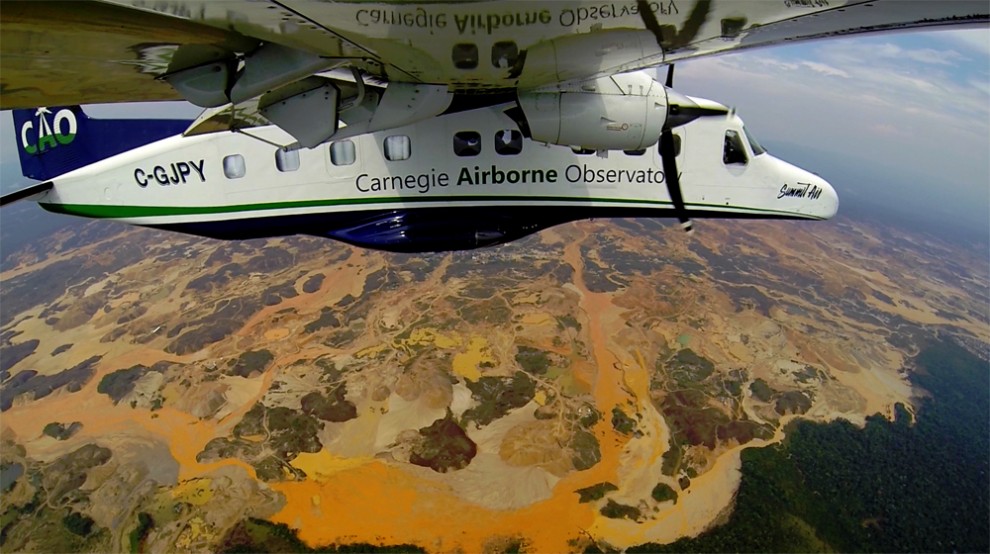

The Amazon Forest: The Lungs of the World
The massive devastation shown by the Carnegie Expedition is one of thousands of small illicit mines gouged today in the state of Madre de Dios at the base of the Andes—a region that is among the most biodiverse and, until recently, pristine environments in the world.
Future threats will come from the Peru-Brazil Trans-Oceanic Highway, which facilitates migration and land grabs, that result in increase deforestation, slash and burn agriculture, and illegal and legal mining concessions, hence ecological destruction and pollution of the land, air and water.
The Amazon River basin has the most advanced rainforest of anywhere in the world. Although exact numbers are not known, the basin may contain up to one million plant species, and countless animals and insects, many humans have yet to discover. Its trees are the engine of perhaps 15 percent of photosynthesis occurring on landmasses, producing the earth’s oxygen and storing carbon dioxide, which regulates local and global climates. Over two-thirds of all the fresh water on earth is found within the Amazon basin. This originator of life must be protected at all costs.
Reference: Asner, Llactayo, Tupayachi & Luna. 2013. Elevated rates of gold mining in the Amazon revealed through high-resolution monitoring. http://dx.doi.org/10.1073/pnas.1318271110
Sources
The Devastating Costs of the Amazon Gold Rush, by Donovan Webster (Smithsonian)
Peru battles the golden curse of Madre de Dios, By Elie Gardner, (Nature).
Gold-Mining In Peru Is Much Worse Than Anyone Thought, By Ed Yong, (National Geographic)
Gold mining ravages Peru, Carnegie Institution, (Science Daily)



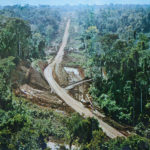

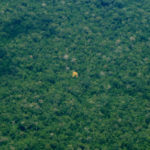
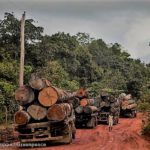






Pingback: 66 Colombian Tribes Face Extinction from Mining and Ranching | WilderUtopia.com
Pingback: China Colonization: Trans-Amazonian Railway | WilderUtopia.com